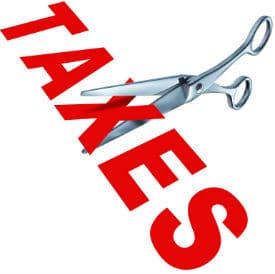
Understanding tax deductions against rental income can provide insight into the value of a potential investment. It can also avoid expenditure on upgrades and renovations that may not be tax deductible in the year they are incurred. Most investment properties are initially negatively geared. This results in a direct reduction in personal income tax. Negative gearing is one of the single greatest tax offsets utilised by health professionals. Understanding the vast array of deductions and offsets will provide the basis for good business planning when upgrading, renovating or repairing a rental property.
The Australian Taxation Office provides a comprehensive book on tax deductions for rental properties and this is a must for new owners. Click here to read the guide.
Types of rental expense
There are essentially three categories for rental expenses:
- Immediately fully deductible in the income year
- Proportionally deductible over a number of years
- Not deductible.
Property Income
Calculating income is much simpler than calculating deductions. Rental income and any payments received for the property (insurance or landlord’s insurance) are part of property income. This includes insurance claims on items that are to be replaced using the insurance money.
Deductions that you cannot claim
Expenses that cannot be claimed as dedications against your rental income include:
- Travel to inspect a property prior to making the purchase.
- Agent costs; stamp duty or settlement fees. These are considered deductions on capital and effect CGT.
- Expenses you do not pay, such as water or electricity, which are paid by the tenants.
- Seminars or information sessions to assist you in finding a rental property.
Top tips for tax deductions
Consider getting advice from a quantity surveyor
It is best to let an expert decide if an expense is fully or partly tax-deductible. Paying a professional such as a quantity surveyor to write a depreciation schedule will alleviate uncertainty and avoid tax errors. In addition the fees for this schedule are deductible in the year incurred.
Discuss templates and record keeping with your accountant
Accountants will generally provide a template for you to complete with your rental property expenses and then allocate them to the appropriate category. This will assist you in an overview of your property expenses and highlight potential areas that you could allocate more funding during a financial year.
Consider leasing the property at a reduced rate
It can be hazardous at tax time to renovate a new purchase. If you purchase a property that has never been tenanted during your ownership, renovations and repairs undertaken are NOT fully deductible in that financial year. It would be well worth considering leasing the property in an “as is” condition. This may be significantly less than your predicted post-repair rent, but will allow you to deduct repairs rather than having them calculated into your depreciation schedule.
Ask for more detailed receipts
When engaging a contractor or company to undertake work on a rental property the receipt should reflect the rental expenses category. When undertaking repairs from storm damage or accidental damage, this should be noted on the receipt. The more information the less chance of incorrectly categorising deductions and this would frequently results in more deductions during the same financial year.
Keep all your receipts
Doing your homework and understanding your responsibilities in providing receipts and travel documents will avoid unnecessary stress. Electronic copies are easily stored and should you have lost receipts a copy of your bank statement and the details of the purchase will often be sufficient for the ATO. Rental properties and negative gearing have been under ATO scrutiny and will continue to be closely monitored.
Consider paying a years interest in advance
Mortgage interest can be paid in advance for up to 12 months and be claimed within that financial year. This is an excellent way to reduce a years taxable income should your following years income be predicted as less then the current year. This is useful for maternity and paternity leave. Also for any extended holidays or doctors undertaking a hospital year of training with signifcantly reduced incomes. It is also beneficial for the preretirement years. Properties that move from negative to positively geared could be left for an additional year in negative gearing by paying interest in advance.
As always, seek professional advice for your circumstances and individual situation. With the basic knowledge on allowable deductions will assist in you better utilising negative gearing.




